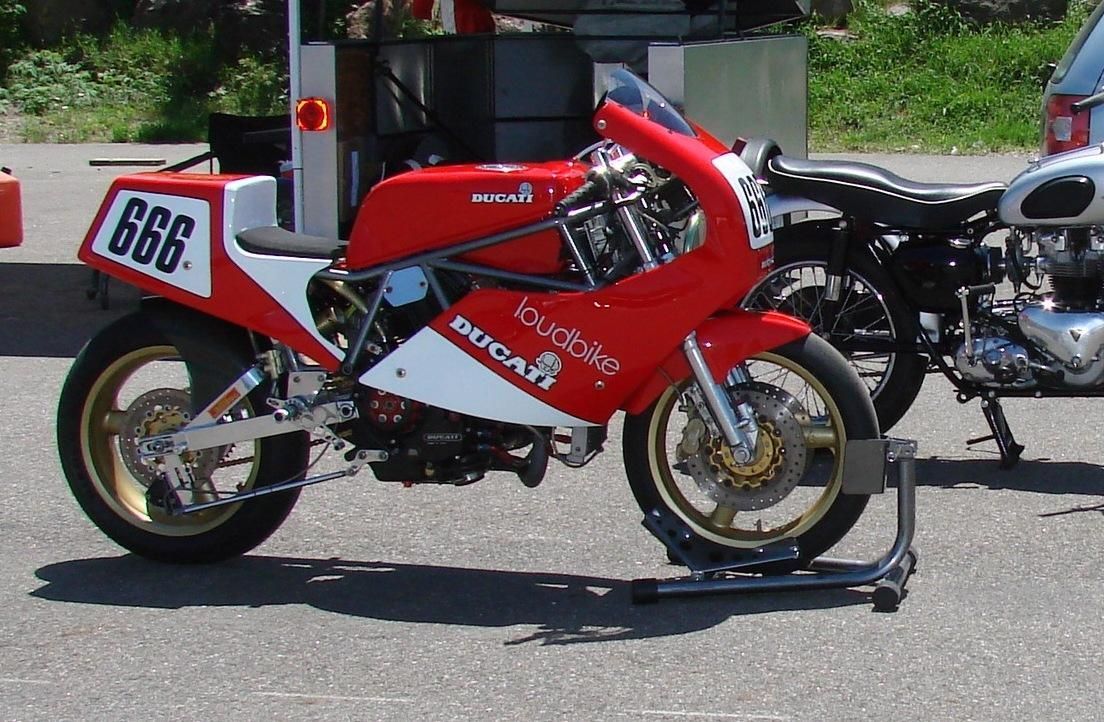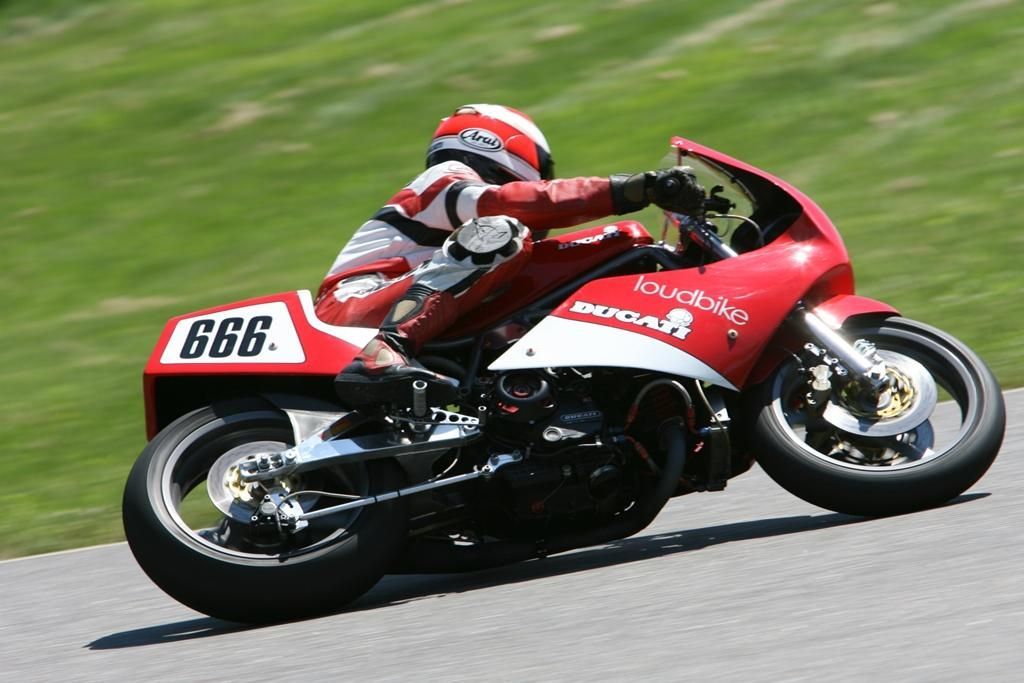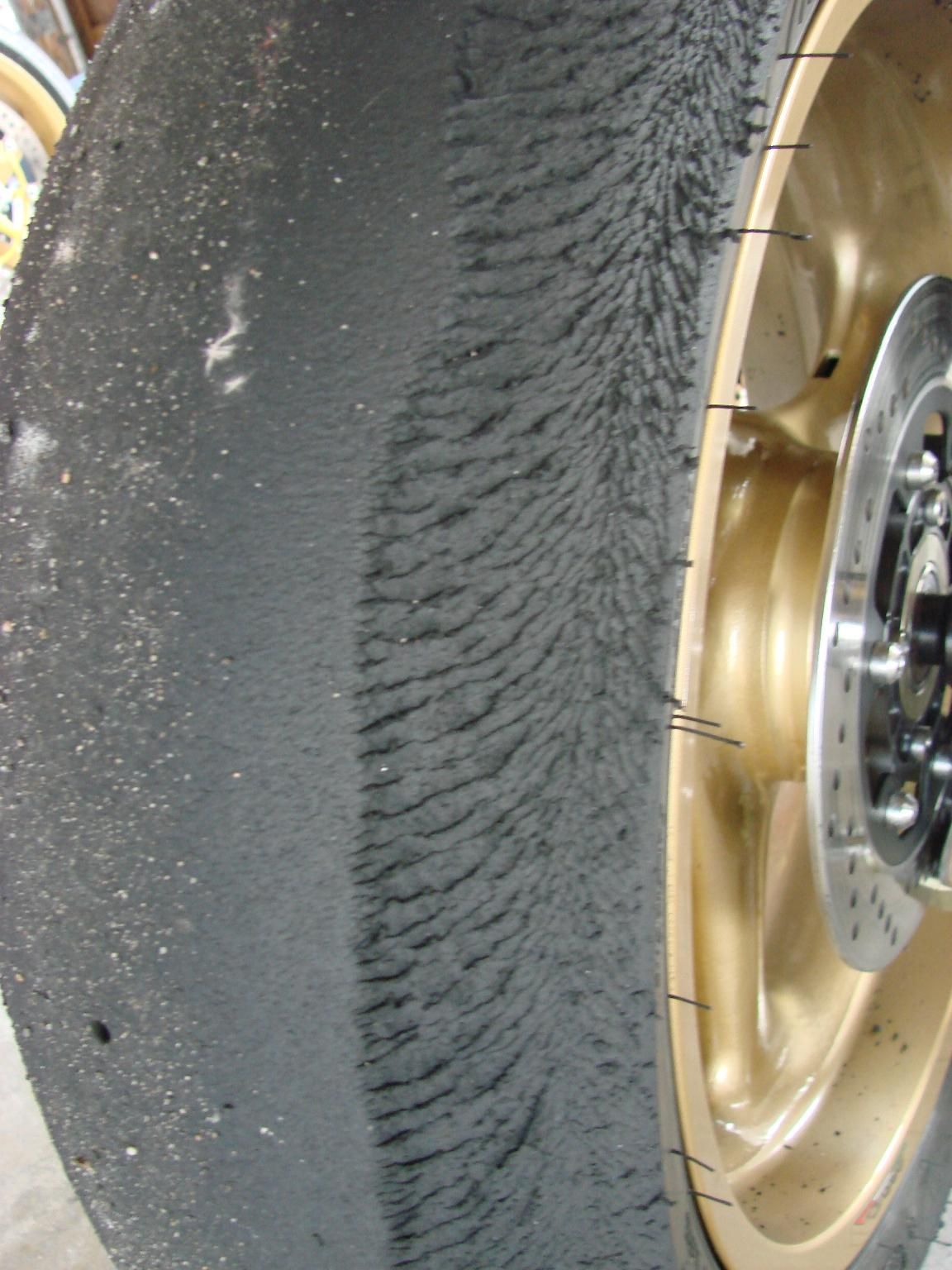About that chain..
In my earlier story about the Yellow Bike III build, I mentioned that incorrect chain tension was causing excessive wheel spin coming out of the slower corners at Grattan - and since then, I've had a few riders ask me what I was rambling on about.
So, here goes..
What was happening with Palmer and I at Grattan was the result of too many issues competing for attention when I was preparing the bike for the track - and in the process of revisiting wheel alignment, I repositioned the rear wheel and didn't reset my chain tension afterwards.
So, how do I set the chain tension on my track bike? I've always found the manufacturer's spec to be on the tight side for track use, but in this case, I'm the Yellow Bike manufacturer - so I have to make my own spec.
First, I rotate the rear wheel while periodically checking chain tension to find the tightest section of the chain. Then I record the axle adjuster positions and back out a bunch of adjustment so the chain is very loose. I record the amount of exposed thread above the rear shock preload adjuster ring and back all of the preload out of the spring - then pull the bike down towards my bike lift with a couple of tie-downs. I heave it down until the shock is fully compressed (or the axle, swing arm pivot and front sprocket are in complete alignment) and adjust my chain for about 5mm of slack (measured at the loosest point on the lower run). To finish the job off, I juggle the adjusters on each side of the swing arm until I have them at an equal distance from the previously recorded readings; while still maintaining the 5mm of slack. And when I reset the shock preload to my starting point, the chain always looks way too loose, but it is in fact perfect for track riding. Now I can record a static measurement forego all the previous nonsense until I make a significant change to the bike set-up.
The pics below illustrate why this is really important stuff.. In the top pic, you see my old 750F1 on the stand with no load (other than the weight of the bike) on the shock. In the picture below that, you see me just starting to feed in the throttle, at full lean in the middle of a fairly hi-speed corner. and if you compare the the angle the swing arm in both pics, you can see just how much mid-corner G-forces compress the rear shock. As you finish the corner, the G-forces begin to taper off, but they are replaced by torque induced suspension squat as you begin to accelerate.

Ducati 750F1 Static

Ducati 750 F1 Corner
The result of these forces is that with the shock set for 30mm of rider sag, some 65% of the shock travel is being used during mid-corner; which has the swing front sprocket, swing arm pin and axle in-line and the chain at its tightest point.
So, if the chain tension is (as it was at Grattan) set too tight, the shock simply stops moving in its downward stroke when the chain reaches full tension. …And then - because your rear suspension has ceased to operate - bad things begin to happen:
- Mechanically speaking, you're stressing (and stretching) your chain and putting tremendous stress on the transmission output shaft & seal.
- From a handling point of view, the squat forces (which were being absorbed by the shock when it was working) are now being transmitted directly to the rear tire. Adhesion goes away fast and the tire either slides or spins (depending on rider input).
If you hit a bump under these conditions, the impact will tie your bike up in knots.
In our case, we had a fairly smooth track surface, so when Gary screwed on the power as he finished the corner, the shock compressed until it hit the full tension of the chain - and then as the rubber bushings in the rear sprocket cush absorbed the impact, the machine began to bounce slightly as the rear wheel broke loose - giving us the uneven tearing on the rear tire. My tension wasn't off by much, but it was enough to dramatically alter the handling on the track.

Rear Tire Spin
While the discussion so far has been focused on a track bike's reaction, the principles still apply to chain-driven street bikes. Proper maintenance and set-up can have a significant positive impact on throttle response, handling and overall performance - and it's an area of the bike that's often overlooked.
How often? From time-to-time, I help out with tech inspection at the local Ducati club track events and chain tension is one of the many things we check as we go through the inspection. Most of the machines ridden at the club events are street bikes and it's not uncommon to find chains so tight (with the rider sitting on the bike) that you could pluck a note on 'em. And many of these bikes have had a recent dealer service.
All manufacturers' publish recommended chain tension numbers in their respective owner's manuals and for street riding; those numbers are going to serve you and your bike very well. The manufactures' specs are generally based on static measurement (bike on the stand) and there are some decent videos on YouTube that cover the basics - Canyon Chasers' is a good place to start: Chain adjustment video
Take a moment and check yours - and while you're at it, take a good look at your chain. The average life expectancy is 15 - 20,000 miles, but that's under ideal circumstances. Dirt, incorrect adjustment and worn sprockets can reduce your chain life dramatically. proper lubrication makes a difference too. Even though I run x-Ring chains, I lubricate them with Motul's 'Road' formula and you can feel the difference when you spin the wheel. There's a ton of good info on sprocket and chain wear on the web, but it's generally safe to say that if your chain and sprockets have 15,000 miles or so on 'em and they look like crap - they probably are.
At about $210.00 for a complete sprocket and chain kit, replacement and proper set-up is one of the cheapest overall performance upgrades you can give your machine.
.
You must be logged in to comment
Login now
I definitely agree, chain maintenance can be easily forgotten, but doing it regularly is an easy way to help your chain live a long and performance-filled life.
Allowing chain tension to fall out of spec can have disastrous consequences, like this street rider discovered: http://www.youtube.com/watch?v=xBZWjwHgveY